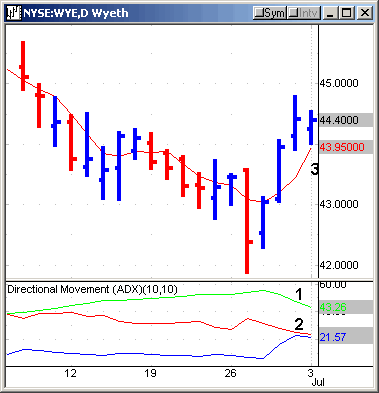How to find the best short sale candidates
In today’s Chart of the Day we’re going to take a look at a
setup from the TradingMarkets
Short Windows Candidates List.
This list contains stocks which are in a strong downtrend, as determined by a proprietary
trend filter and whose current bar has its lows above the 4-day
moving average.
Historically, these stocks on average have had a larger than normal short-term
downside reversals. In order for us to be a buyer of a “Trading Window” we must
have a 10-period ADX reading of 30 or higher and a +DI reading above the -DI
reading. Or we must have a 14-period +DI of 30 or higher (with no ADX reading
required).
In order for us to have a sell signal, the 10-period ADX must be 30 or higher
and the -DI must be greater than the +DI. Or we must have a 14-period -DI
reading of above 30 (with no ADX reading required). “Single Windows” are the
most common type of Windows. They are simply a single bar which has its low
trading above the 4-period moving average or its high of the day below the
4-period moving average. You will enter tomorrow if the market trades above
today’s high (for buys) or below today’s low (for sells).
Wyeth
(
WYE |
Quote |
Chart |
News |
PowerRating)

Here’s the chart of WYE with a full description of the setup.
1. 10-period ADX must be 30 or higher.
2. The -DI must be greater than the +DI.
3. A single bar which has its low trading above the 4-period moving average.
In this chart, we’ve given you an example of what to look for
in TradingMarkets Short Windows candidate.
In the days to come we’ll show you more of these examples on both the long and
short side. I’ve enjoyed showing you this Chart of the Day, please feel free to
email me at editor@tradingmarkets.com
if you have any questions or comments.
Ashton Dorkins
Editor-in-Chief
Reminder: We are in no way recommending the purchase or short sale of these
stocks. This article is intended for education purposes only. Trading should be based on your own understanding of market conditions,
price patterns and risk; our information is designed to contribute to your
understanding. Controlling risk through the use of protective stops is critical.
